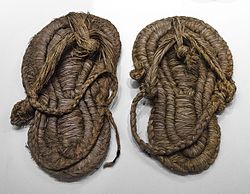
Abacá, also known as Manila hemp, is a species of banana, Musa textilis, endemic to the Philippines. The plant grows to 13–22 feet (4.0–6.7 m), and averages about 12 feet (3.7 m). The plant has great economic importance, being harvested for its fiber extracted from the leaf-stems.
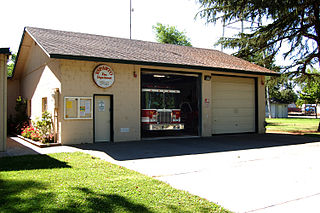
Esparto is a census-designated place (CDP) in Yolo County, California, United States. It is part of the Sacramento–Arden-Arcade–Roseville Metropolitan Statistical Area. The population was 3,108 at the 2010 census.

A braid is a complex structure or pattern formed by interlacing three or more strands of flexible material such as textile yarns, wire, or hair. The simplest and most common version is a flat, solid, three-stranded structure. More complex patterns can be constructed from an arbitrary number of strands to create a wider range of structures. The structure is usually long and narrow with each component strand functionally equivalent in zigzagging forward through the overlapping mass of the others. It can be compared with the process of weaving, which usually involves two separate perpendicular groups of strands.

A basket is a container that is traditionally constructed from stiff fibers, and can be made from a range of materials, including wood splints, runners, and cane. While most baskets are made from plant materials, other materials such as horsehair, baleen, or metal wire can be used. Baskets are generally woven by hand. Some baskets are fitted with a lid, while others are left open on top.

Stipa is a genus of around 300 large perennial hermaphroditic grasses collectively known as feather grass, needle grass, and spear grass. They are placed in the subfamily Pooideae and the tribe Stipeae, which also contains many species formerly assigned to Stipa, which have since been reclassified into new genera.

Fiber crops are field crops grown for their fibers, which are traditionally used to make paper, cloth, or rope.

Espadrilles are casual, rope-soled, flat but sometimes high-heeled shoes. They usually have a canvas or cotton fabric upper and a flexible sole made of esparto rope. The esparto rope sole is the defining characteristic of an espadrille; the uppers vary widely in style.

Stipa tenacissima is a perennial grass of northwestern Africa and the southern part of the Iberian Peninsula.
The material culture of the Manasir is very basic and primarily relies on the by-products of palm tree cultivation. Date trees not only constitute the main source of income and an important supply of nutrition in Dar al-Manasir, but the Manasir also make intelligent use of all different parts of the palm tree. From it they produce diverse household items, garden tools and building material for their traditional mud houses..
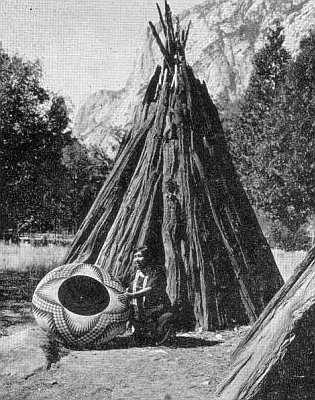
Basket weaving is the process of weaving or sewing pliable materials into three-dimensional artifacts, such as baskets, mats, mesh bags or even furniture. Craftspeople and artists specialized in making baskets may be known as basket makers and basket weavers. Basket weaving is also a rural craft.

Lygeum is a genus of Mediterranean plants in the grass family. It is placed in its own tribe Lygeeae, which is sister to Nardeae.

A tick mattress, bed tick or tick is a large bag made of strong, stiff, tightly-woven material (ticking). This is then filled to make a mattress, with material such as straw, chaff, horsehair, coarse wool or down feathers, and less commonly, leaves, grass, reeds, bracken, or seaweed. The whole stuffed mattress may also, more loosely, be called a tick. The tick mattress may then be sewn through to hold the filling in place, or the unsecured filling could be shaken and smoothed as the beds were aired each morning. A straw-filled bed tick is called a paillasse, palliasse, or pallet, and these terms may also be used for bed ticks with other fillings. A tick filled with flock is called a flockbed. A feather-filled tick is called a featherbed, and a down-filled one is a downbed; these can also be used above the sleeper as a duvet.

Basketry of Mexico has its origins far into the pre Hispanic period, pre-dating ceramics and the domestication of crops. By the time the Spanish arrived, there were a number of indigenous forms, a number of which are still made today. These and products that the Spanish introduced form the combined tradition that remains today. Like other Mexican handcrafts, sales to tourists and collectors is important, but basketry is not as popular as other handcrafts. Basketry techniques and materials vary from region to region depending on the vegetation available, with important traditions in Sonora, State of Mexico, Michoacán, Veracruz, Oaxaca and the Yucatán Peninsula.

Hidalgo (state) handcrafts and folk art are mostly made for local consumption rather than for collectors, although there have been efforts to promote this work to a wider market. Most are utilitarian and generally simply decorated, if decorated at all. The most important handcraft traditions are pottery, especially in the municipality of Huejutla and textiles, which can be found in diverse parts of the state. Most artisans are indigenous, with the Otomi populations of the Mezquital Valley being the most dominant. Other important handcrafts include basketry, metal and wood working.
Eva Wolfe was an accomplished basket maker from North Carolina. Wolfe was known for weaving rivercane baskets, a traditional type of Cherokee basketry. She earned special distinction for her accomplishments in doubleweave basketry, a difficult plaited basket weaving technique. She was honored with a number of awards for her achievements as an artist, including the Brown-Hudson Folklore Award from the North Carolina Folklore Society in 1988 and the North Carolina Heritage Award in 1989.
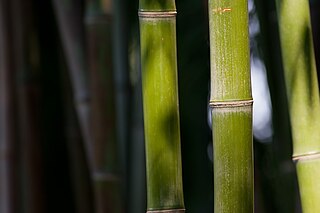
Bambooworking is the activity or skill of making items from bamboo, and includes architecture, carpentry, furniture and cabinetry, carving, joinery, and weaving. Its historical roots in Asia span cultures, civilizations, and millennia, and is found across East, South, and Southeast Asia.

Bamboo weaving is a form of bambooworking and a traditional Japanese craft, with a range of different applications, weaving styles and appearances. Japanese bamboo weaving is particularly well known for its use in basket weaving.
Pat Courtney Gold was a Wasco Native fiber artist and basket weaver from the Columbia River area of Oregon. She graduated with a BA in mathematics and physics from Whitman College and worked as a mathematician-computer specialist before beginning her career in basket weaving. Gold harvested traditional plant fibers to use in her work, including dogbane, cattail, sedge grass, red cedar bark and tree roots. Her pieces often reflected the natural world along the Columbia River, mixing traditional motifs such as condors and sturgeon with contemporary elements like airplanes. Gold also became an environmental and cultural educator, helping to spread knowledge of her ancestral heritage and basketry skills.
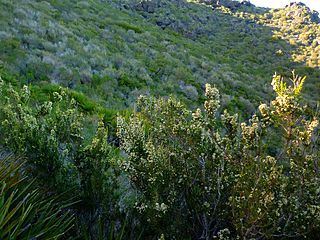
The Southeastern Iberian shrubs and woodlands is a Mediterranean forests, woodlands, and scrub ecoregion in southwestern Europe. It lies in southeastern coastal Spain, along the Mediterranean Sea.

Rope-soled shoes have soles made from rope or rope fibres. They were formerly a cheap, disposable, hand-made item. However, the widely made espadrille comes in many styles and can include expensive fashion items.

